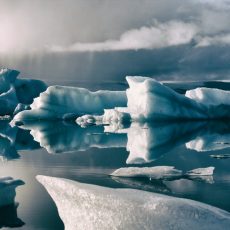Today we’re talking about some terms that often cause more than a bit of confusion, and are sometimes used interchangeably, incorrectly: weather, climate, global warming, and climate change.
Read moreGlobal Warming
Global Warming is Letting it Snow in the United States

Why is the United States currently experiencing record low temperatures during global warming? Although decreasing temperatures and global warming seemingly contradict one another, this trend makes sense.
Read moreMitigating Climate Change: It Starts With Better Ocean Data

A molecule of CO2 emitted in India or China has the same effect on the climate system as a molecule emitted in the United States. No matter where we are, climate change affects us all the same.
Read moreWhy is 1.5°C of Global Warming Important?

We’ve talked about the Paris Agreement before, the international treaty on climate change adopted by 196 Parties at COP 21 in December of 2015. Its goal is to limit global warming to well below 2, preferably 1.5 degrees Celsius, compared to pre-industrial levels. But why? Today, let’s talk about what that 1.5 degrees actually means.
Read moreRemember the Ozone Layer?

A few weeks ago, in the midst of rising coronavirus cases worldwide, political upheaval, extreme weather events in the form of back to back hurricanes in the northern hemisphere and typhoons in the southern, and ongoing fires in the American west, Mario Molina, a chemist whose work on the ozone layer earned him a Nobel Prize in 1995, quietly passed away in Mexico City. He was 77. Molina’s work was crucial to enacting the Montreal Protocol on Substances that Deplete the Ozone Layer in 1987, and it made him one of the most consequential scientists of the past 50 years.
Learn more in the latest vid from the Hive!
Read moreThe Great Barrier Reef and Climate Change

The Great Barrier Reef is located in the Coral Sea, off the coast of Queensland, Australia and can be seen from outer space. It is the world’s biggest single structure made by living organisms, composed of over 2,900 individual reefs and 900 islands stretching for over 2,300 kilometers (1,400 mi) over an area of approximately 344,400 square kilometers (133,000 sq mi).
Read moreMore Tricks, and Still No Treats

It’s almost Halloween, the spookiest time of the year, complete with ghosts and goblins, witches and black cats, scary stories and… climate change? Most of us have at least some small knowledge of the increasing effects of climate change on our planet—increased global temperatures, warming seas, rising seas, melting ice caps, bleaching corals, biodiversity loss, fires, floods, and more. There are, however, some spookier anomalies taking place around the world–so many, in fact, our first article on the subject screamed for a second.
Read moreAll Tricks and No Treats

It’s October, the spookiest month of the year, complete with ghosts and goblins, witches and black cats, scary stories and… climate change? Most of us have at least some small knowledge of the increasing effects of climate change on our planet—increased global temperatures, warming seas, rising seas, melting ice caps, bleaching corals, biodiversity loss, fires, floods, and more. There are, however, some spookier anomalies taking place around the world….
Read moreClimate Change Adaptation Strategies

Today, we’re going to look at Climate Change Adaptation Strategies. But remember, rather than only continuing to plan and strategize our adaptation to climate change, we need to come together to minimize the changes to our climate and global warming. Innovation and systemic changes are vital to this. Research whether your local or national administrators have such plans in place and hold them accountable if they are not rigid enough–or if they don’t even have a plan–by using your vote.
Read moreThe significance of 1.5°C of warming

One concept which confounds many people in discussions around climate change and global warning, is that a rise of 1.5°C could be significant. I’ve never known a single day in my life where there’s not been greater variation than that, let alone then talking about seasonal variations in temperatures. So it’s no wonder that an average increase of a paltry 1.5°C leading to disaster is a difficult concept to come to grips with. Let’s explore how much it could really mean.
Read more